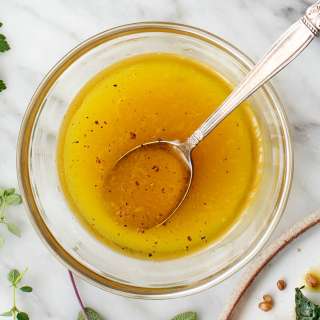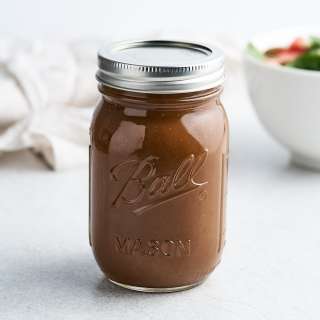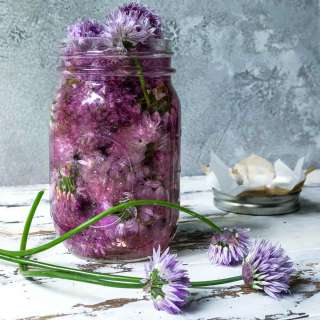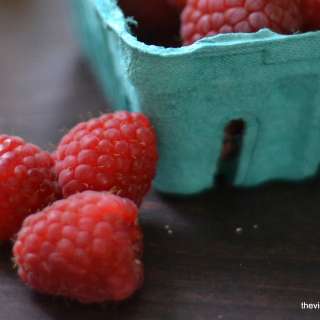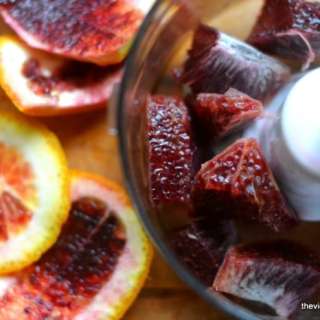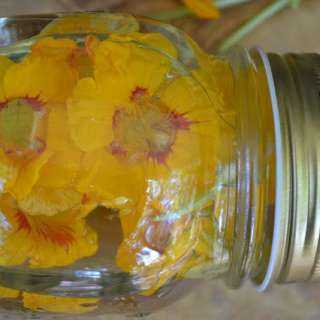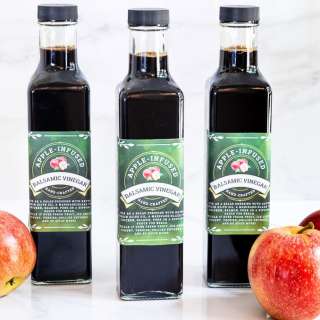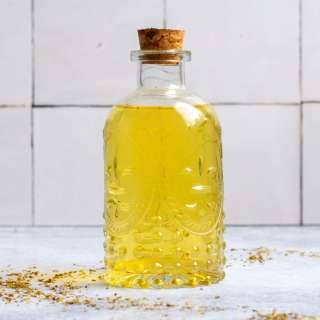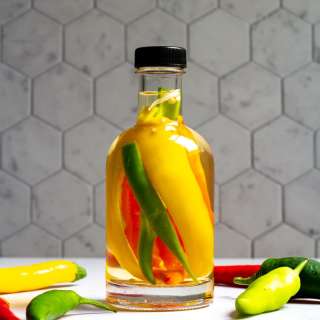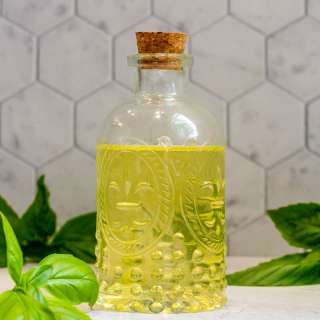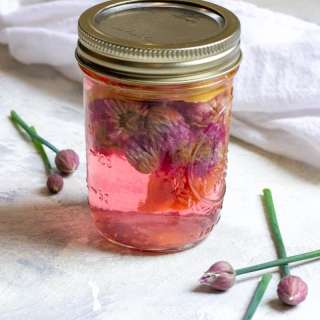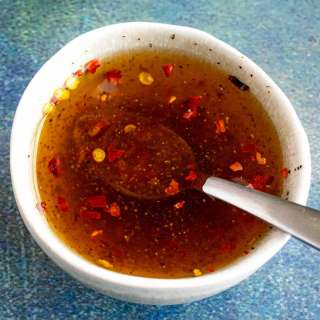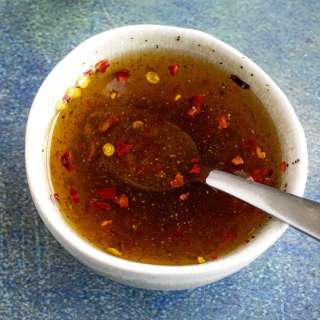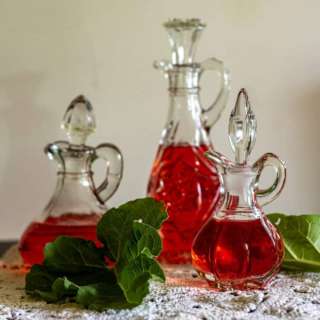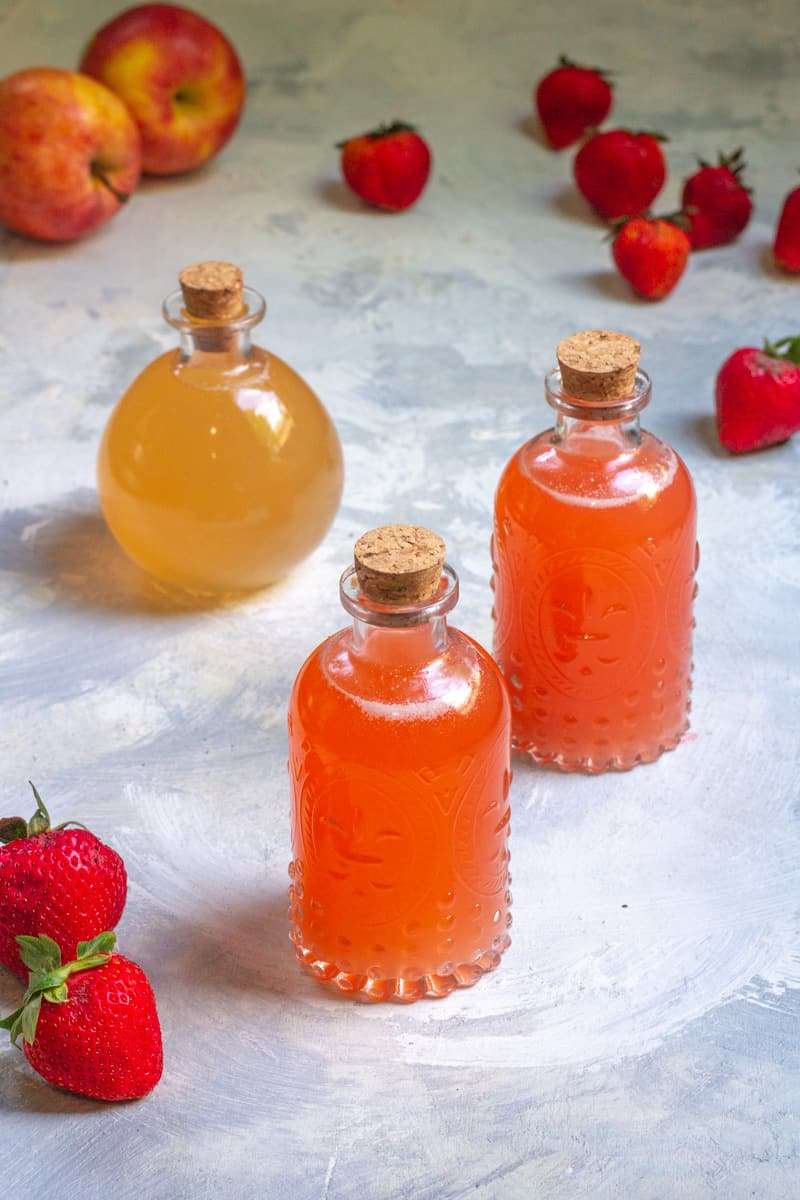
Fruit Vinegar
User Reviews
4.9
39 reviews
Excellent
-
Prep Time
5 mins
-
Fermenting Time (Minimum):
28 d
-
Total Time
28 d 5 mins
-
Servings
32 people
-
Calories
6 kcal
-
Course
Condiments
-
Cuisine
American

Fruit Vinegar
Report
This easy fermented fruit vinegar uses two ingredients: fruit and water. It's the perfect way to use fruit scraps and overripe fruit to make homemade apple cider vinegar, berry vinegar, and more!
Share:
Ingredients
- 6 cups fruit and / or fruit scraps Measurement an estimate. Use enough fruit to fill a jar ½ or ¾ full.
- herbs or spices (optional)
- 1 orange peel (optional)
Instructions
First Ferment:
- Fill the jar ½ to ¾ full with fruit and any herbs or spices. Do not fill the jar completely.
- Weigh the Fruit Down:If desired, top fruit with the orange peel. Alternatively, you can use fermenting weights or a small glass jar filled with water and sealed.When to Skip the Weight: If your fruit is heavy, or already has large sections of thick peel, you can probably get away with using its own peel as a weight. (Ex: For mango vinegar, I use a few layers of mango peel to weigh down the vinegar.) If the fruit tends to float (as with apples, berries, or grapes), I recommend using an orange peel or other weight.
- Fill the jar with unchlorinated water. The water should be an inch or two above the fruit, but there should still be a 2"-4" space in between the water and the top of the jar.Cover the jar with a paper towel or tea towel, and secure with a rubber band. Alternatively, use an airlock fermenting lid (to help prevent fruit flies).Do not seal the jar with a lid (such as a canning lid). The vinegar needs airflow.
- Store the jar out of direct sunlight for 1-2 weeks. Check on the fruit daily to make sure it's staying below the water line. If any fruit pops up above the water, push it down.As the ferment continues, the water will change from clear to cloudy to clear again. Note that some fruit vinegars will always appear cloudy, so if your water doesn't change from cloudy to clear, go ahead and move on to the next step after two weeks.
Second Ferment:
- Strain the fruit out of the liquid. I usually set a mesh sieve above another container and pour the vinegar through it.Discard or compost the fruit. Clean the jar, and pour the vinegar back into the jar. Recover the jar with the paper towel and rubber band or the airlock fermenting lid.Again, do not seal the jar with a lid (such as a canning lid). The vinegar needs airflow.
- Two Week Ferment + Refrigerate the Vinegar:For a relatively sweet vinegar, let the vinegar ferment for at least two more weeks or until you like the flavor, and then store in the fridge.Longer Ferment + Shelf-Stable Vinegar:For a more acidic vinegar, let the vinegar continue to ferment until the bacteria in the vinegar is finished fermenting. This may take several months.To test the vinegar for doneness, pour it into a pressure-resistant bottle and seal the bottle. Wait 24 hours and open the bottle. If the vinegar has begun to carbonate, let it ferment in the jar longer. If it hasn't, try sealing it in the pressure-resistant bottle again for a few days. When there are no signs of carbonation, the vinegar is done. Store it at room temperature and use as desired.Use vinegar within 6 months for the best flavor.
Notes
- Yields approx. 4 cups of vinegar, depending on the size of the fruit and how much water was added. Serving size estimated at 1 oz vinegar per serving.
- Troubleshooting
- Most fermenting problems with vinegar come from trying to ferment in temperatures that are too warm for the fermentation process. Try to keep your jars in a room that's between 55 and 75 degrees Fahrenheit.
- Surface growth: If you see anything "scummy" starting to grow on your vinegar while it's fermenting, scoop off the surface growth. If it smells fine, it is fine.
- Over-Fermenting: If your vinegar develops an awful smell (like rotting garbage), toss it out. If it smells a little funky (like vinegar), it's probably fine.
- Mold Growth: If you're having problems with mold growing on the vinegar (not simply white scum on the top), toss out the vinegar. Next time, make sure your vinegar is fermenting in a room that's not above 75 degrees, and is in a place with good airflow.
- Non-Sweet Fruits: This process may not work with non-sugary fruits such as lemons.
Nutrition Information
Show Details
Calories
6kcal
(0%)
Carbohydrates
1g
(0%)
Sodium
1mg
(0%)
Potassium
22mg
(1%)
Sugar
1g
(2%)
Calcium
2mg
(0%)
Iron
1mg
(6%)
Nutrition Facts
Serving: 32people
Amount Per Serving
Calories 6 kcal
% Daily Value*
| Calories | 6kcal | 0% |
| Carbohydrates | 1g | 0% |
| Sodium | 1mg | 0% |
| Potassium | 22mg | 0% |
| Sugar | 1g | 2% |
| Calcium | 2mg | 0% |
| Iron | 1mg | 6% |
* Percent Daily Values are based on a 2,000 calorie diet.
Genuine Reviews
User Reviews
Overall Rating
4.9
39 reviews
Excellent
Other Recipes
